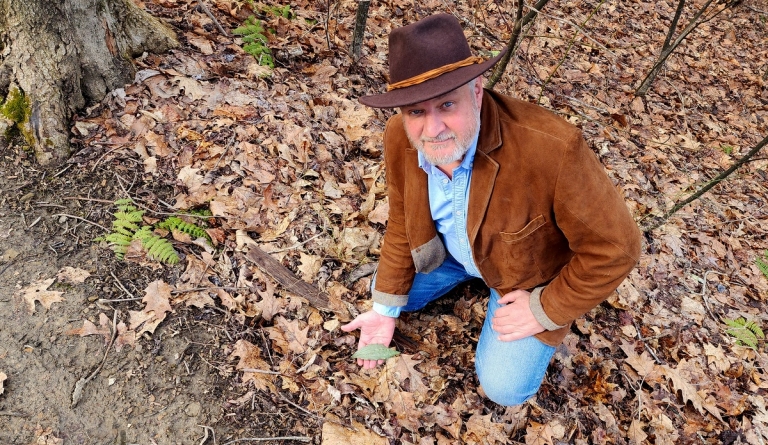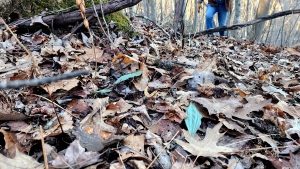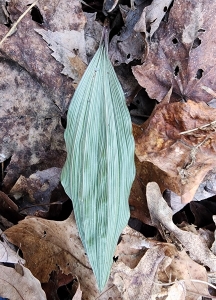
FAYETTEVILLE, W.Va. — Only the most sharp-eyed outdoor enthusiasts may have spotted this remarkable one-leafed orchid hiding in the West Virginia woodlands in winter.
While most plants gather sunlight in the warm months, this remarkable denizen of the forest floor produces its single papery leaf in winter after the canopy of leaves drops.

The unusual plant's light green leaf is somewhat conspicuous in the brown leaf litter once one knows to look for it, says David Sibray, publisher of West Virginia Explorer Magazine.
"Aplectrum hyemale is one of my favorite winter species," says Sibray. "It's one of those little plants that reminds me winter will eventually pass on to spring."
Sibray attributes much of his knowledge of the plant to native plant expert Barry Glick, who says indigenous people used the glutinous matter derived from crushing the plant bulb to mend broken pottery and fasten objects together. For this reason, one common name for the plant is "Putty Root."

Glick says another common name is the "Adam & Eve" plant. "Adam & Eve is a reference to the growth habit of the bulbs: the leaf and flower arise from the current season's growth while the previous year’s bulb is still present.
"So, as in the Biblical tale, the new growth—Eve—springs forth from the previous year's bulb— Adam. One way of propagating the plant is to cut Adam away from Eve with a sharp knife and replant him."
Later in the spring, after the trees have leafed out and sunlight no longer reaches the forest floor, the leaf dies, but the plant later sends up a small flowery stalk.
For more information on the plant, read Glick's column "Single-leafed orchid grows wild in West Virginia woodlands."
Sign up to receive a FREE copy of West Virginia Explorer Magazine in your email twice weekly. Sign me up!




























